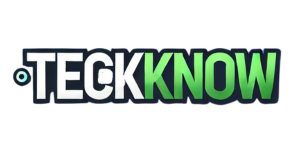JAKARTA, teckknow.com – In an era of information overload, Content Management has become essential for businesses, educators, and individuals alike. Effective Content Management means more than storing files—it’s about organizing, retrieving, and governing information so stakeholders can find the right content at the right time. Drawing on practical insights and proven techniques, this article explores how to implement robust Content Management strategies that streamline workflows, improve collaboration, and maintain compliance.
Importance of Content Management
Challenges of Information Overload
As organizations generate emails, documents, multimedia, and web pages at an unprecedented rate, locating relevant information becomes a daunting task. Without proper Content Management, teams waste hours searching disparate repositories, leading to missed deadlines, duplication of effort, and frustrated users.
Benefits of Effective Content Management
- Improved Productivity: Centralized repositories and intuitive metadata reduce search times.
- Enhanced Collaboration: Version control and workflow automation foster seamless handoffs.
- Risk Reduction: Governance policies and audit trails mitigate legal and regulatory exposure.
- Scalability: Structured information architectures adapt as your content library grows.
By prioritizing Content Management, organizations can transform chaos into clarity, enabling data-driven decisions and faster innovation.
Core Components of Content Management Systems
Content Creation and Editing
A robust CMS provides WYSIWYG editors, markdown support, and template libraries so authors can produce consistent, branded content. Collaborative editing features—comments, tracked changes, and role-based access—ensure quality without bottlenecks.
Workflow and Approval
Automated workflows route content through review, approval, and publication stages. Notifications alert stakeholders when action is required, and status dashboards provide real-time visibility into pending tasks.
Storage and Retrieval
Efficient Content Management leverages structured storage—relational databases for text, object stores for images and video—and full-text search engines with indexing for rapid retrieval. Caching layers further accelerate frequently accessed assets.
Governance and Compliance
Built-in audit logs, retention policies, and permission controls help enforce corporate and regulatory requirements. Administrators can define lifecycle rules to archive or purge outdated records systematically.
Strategies for Organizing Information
Taxonomy and Metadata
Develop a shared taxonomy—a hierarchical classification of topics, departments, or product lines—and apply standardized metadata fields. Consistent tags (e.g., “Finance,” “HR,” “Q4 Reports”) empower users to filter, faceted browse, and discover related content effortlessly.
Folder Structures vs. Tagging
While nested folder structures feel familiar, rigid hierarchies can hamper flexibility. Combining folders for broad categories with metadata tags for cross-cutting attributes provides the best of both worlds, enabling multiple navigation paths.
Search Optimization
Implement search synonyms, stop-word removal, and relevance tuning to deliver accurate results. Leverage AI-driven search enhancements—auto-suggest, autocomplete, and semantic understanding—to surface content even when users lack exact keywords.
Version Control
Keep every revision of a document or asset. Versioning not only tracks changes and authorship but also allows rollbacks in case of errors, ensuring that Content Management supports both innovation and stability.
Tools and Technologies
Popular CMS Platforms
- WordPress and Drupal: Flexible, open-source systems ideal for web content.
- SharePoint and Confluence: Enterprise-grade, integrated with collaboration suites.
- Headless CMS (e.g., Contentful, Strapi): Decouple content management from presentation for multi-channel delivery.
Integrations and Automation
APIs and webhooks bridge your CMS with CRM, marketing automation, analytics, and digital asset management (DAM) systems. Automated routines—scheduled publishing, content synchronization, and cleanup scripts—keep repositories tidy without manual intervention.
AI and Machine Learning
AI-powered tools can auto-classify documents, extract key entities, and generate summaries. Machine learning models predict content usage patterns, optimize metadata suggestions, and flag redundancies, supercharging your Content Management processes.
Best Practices for Effective Content Management
Governance Policies and Guidelines
Establish clear ownership for content types, define approval authorities, and document style guides. Governance committees should meet regularly to review taxonomy updates, compliance requirements, and system customizations.
User Training and Adoption
Even the most powerful Content Management system fails without user buy-in. Offer role-based training sessions, quick-start tutorials, and hands-on workshops. Champion power users who can mentor colleagues and provide real-time support.
Continuous Improvement and Auditing
Schedule periodic audits of content relevance, metadata consistency, and storage utilization. Use analytics dashboards to track search success rates, abandoned workflows, and user engagement metrics. Iterate on your taxonomy and processes based on feedback.
Case Study: Streamlining Legal Document Management
Problem Statement
A mid-sized law firm struggled with thousands of contracts, briefs, and filings scattered across local drives and email attachments. Locating precedent documents took attorneys upwards of 30 minutes per search, delaying client responses.
Solution Implementation
- Selected a cloud-based CMS with built-in document classification and full-text search.
- Designed a taxonomy around practice areas, clients, and document types.
- Migrated legacy files in bulk, applying metadata via automated scripts.
- Defined workflows: draft → internal review → partner approval → publication.
Results and Lessons Learned
- Search times dropped by 80%, saving billable hours.
- Audit trails simplified conflict-check processes.
- Attorneys embraced the system after a two-week training blitz.
- Ongoing governance ensured taxonomy remained aligned with evolving practice areas.
Conclusion
Implementing effective Content Management transforms fragmented information into a strategic asset. By combining taxonomy, metadata, automation, and user-centric workflows, organizations can reduce search times, enhance collaboration, and ensure compliance. Whether you’re migrating legacy archives or launching a new knowledge hub, applying these principles will help you organize information effectively and unlock its full potential.
Boost Your Proficiency: Learn from Our Expertise on Technology
Don’t Miss Our Latest Article on E-commerce Solutions: Driving Online Business Success!
